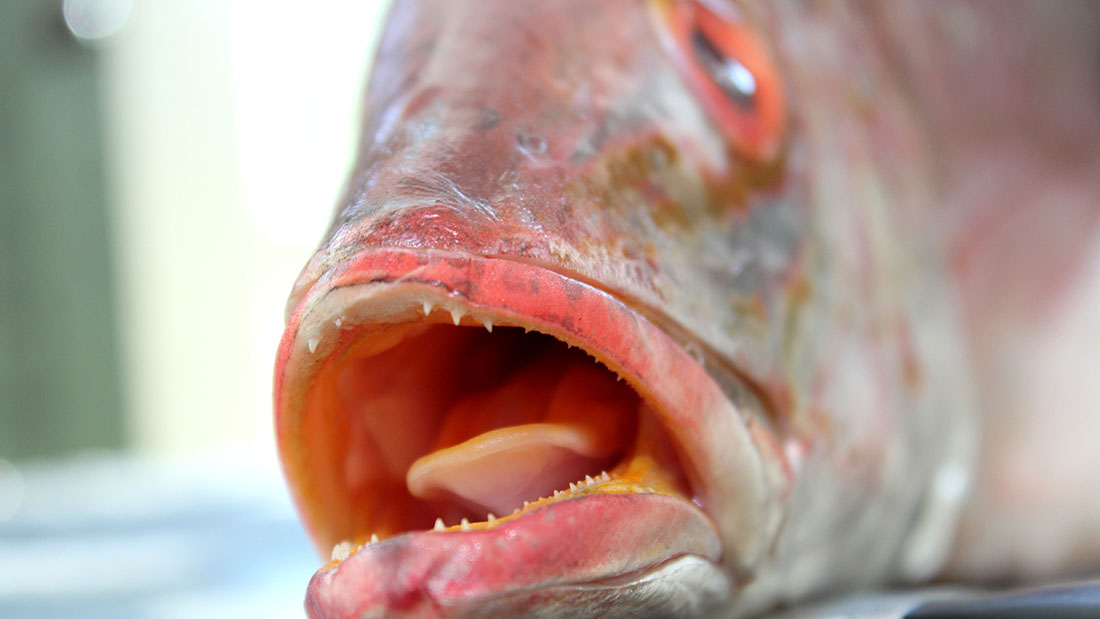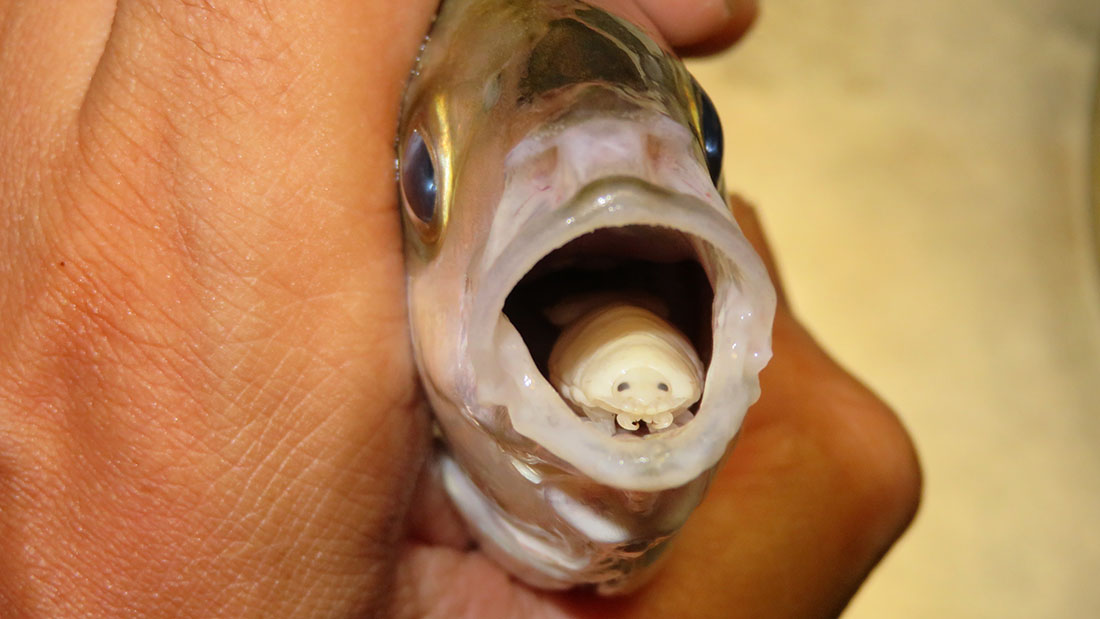Ask a fish if it has a tongue, and it probably won’t answer – partly because it can’t talk, but also because the question is tricky to answer. Most definitions of a “tongue” describe a muscular organ in the base of the mouth with the ability to move independently, an ability that enables humans to form complex speech. By this description, fish do not have tongues, but they do have an organ that closely resembles one in both form and function.
What fish have instead of a tongue is something called a basihyal, a bony slab sitting on the floor of the mouth that looks a bit like a tongue, but without the dexterity. It has bones, is not muscular, doesn’t have taste buds, and can barely move.
It’s thought that this structure evolved to protect the ventral aorta, a major blood vessel from the heart, which sits dangerously close to the fish’s mouth. Without this hard protective organ, the aorta’s position would make it vulnerable to impacts from live, moving prey.

Don’t be fooled, this is a mere tongue imposter.
Image credit: KITCHENADE / Shutterstock.com
However, much like a tongue, the basihyal also serves a function during mealtimes. Fish use this bony appendage to maneuver food towards the throat, unlike mammals, who use the tongue muscles to position food in the mouth for chewing. In a finely tuned choreography of jaw movements and body muscle contractions, sharks and other large fish pitch in muscles from their pectoral girdle – basically, their shoulder equivalent – to help guide food down the esophagus.
The size and shape of the basihyal differs between fish species, and some even come with a serious upgrade: teeth. The sheepshead fish, for example, has dental gear attached right to its basihyal, perfect for crunching through crabs and oysters. One genus of argentinid fish is even named Glossanodon, which translates to “tongue teeth”.
The function of fish “tongues” also differs between species. Archerfish, for instance, use their basihyal as part of a squirt gun mechanism, blasting jets of water to knock unsuspecting insects off overhanging branches and straight into their waiting mouths. Lampreys, on the other hand, can actually protrude their teeth-studded tongues and use them to rasp away at prey flesh.
These bony mouth limbs aren’t even necessarily used for tasting, taking them one step further away from being classified as a tongue. Due to fish’s propensity for being perpetually wet, they’re able to host taste buds on their lips, fins, and even their skin. Catfish are able to detect flavors all over their bodies, with the channel catfish sporting around 680,000 taste buds, compared to our measly 5,000.

This tongue-eating louse is both gross and unexpectedly adorable.
Image credit: ijimino / Shutterstock.com
However, having a basihyal isn’t all fun and games as this appendage is at risk of predation from parasitic isopods, specifically those in the genus Ceratothoa, which are known as “tongue biters”. They clamp onto a fish’s tongue base, cut off its blood supply, and eventually cause it to waste away, at which point the parasite sets up shop, replacing the missing organ entirely. Some sip the fish’s blood, others eat mucus, but crucially, they don’t feed on the fish’s prey, and they don’t appear to kill the host.
And on that nightmare-inducing note, let’s summarise – do fish have tongues? No, not in any significant sense. But they do have a bony, Swiss Army Knife-style oral tool, and they can taste with their skin, so who’s the real winner?
Source Link: Do Fish Have Tongues?